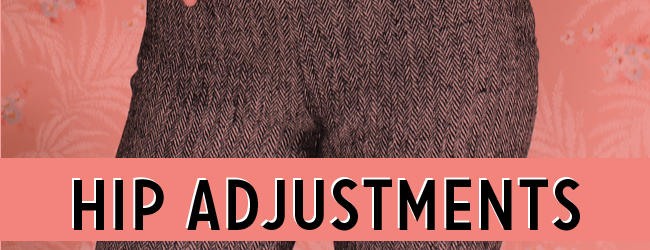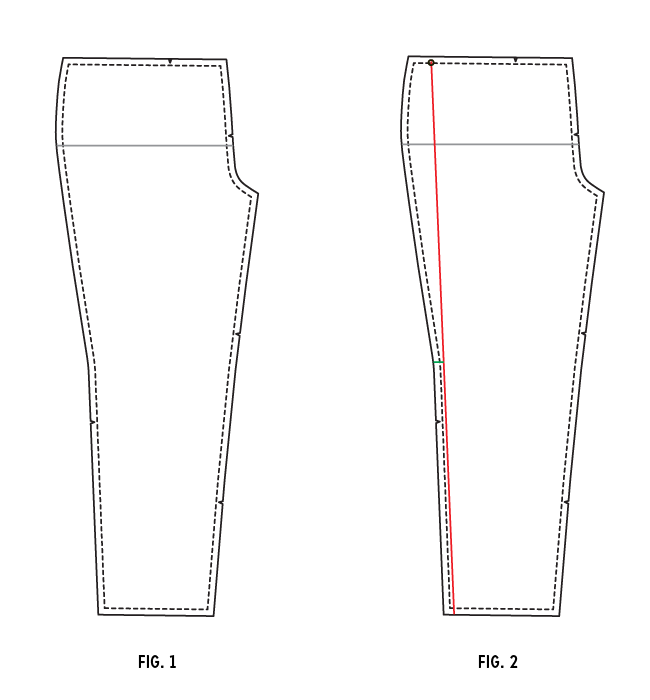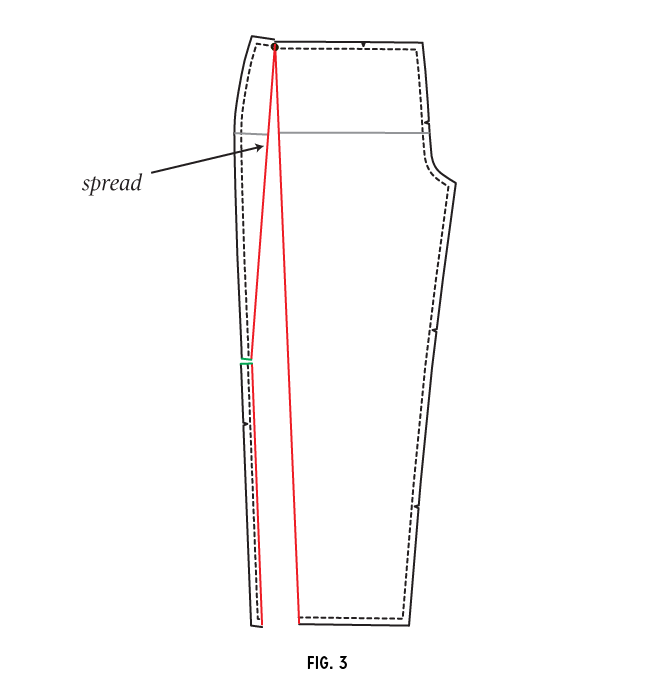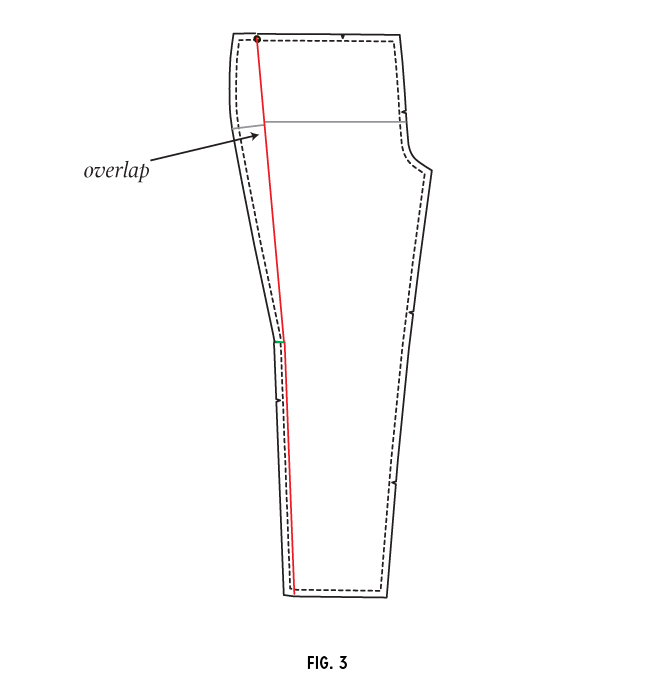
We’re onto the fourth in a series of posts this week on different fitting adjustments you can use for the Clover sewalong, or for nearly any other pair of pants you make. This tutorial is for a very common adjustment, for those with either wide or narrow hips.
Fitting notes:
- After you’ve made your muslin, please refer to the pants fitting cheatsheet to help you decide which adjustments to try.
- Use your muslin to determine how much to adjust the pattern. For example, if you can see that you need an extra inch of width in a certain area, you’ll need to add an inch of width when adjusting your pattern.
- Refer to this post on making muslins for further help with this.
- Be sure to make a second muslin (and perhaps more) after you’ve adjusted your pattern.
How to use the fitting diagrams:
- You will want to trace a copy of your pattern. Not a big deal, since this pattern has only a few pieces, and it will save you from ruining your pattern.
- Mark your seamlines on the pattern (5/8″ from the edge). You don’t need to mark it over the whole pattern, but at least mark the seam at the points where the slash lines are. On the diagrams, the seamlines are marked with dashed lines.
- The diagrams show where to cut, spread, and overlap your pattern.
- You’ll notice little circles in some spots, where the slash lines intersect the seam line. This is called a “pivot point.” Don’t slash the pattern all the way to the edge, but instead slash just to where this circle is. Then carefully snip into the seam allowance, forming a little hinge where the circle is. When you adjust your pattern, you’ll be pivoting at this point rather than from the very edge.
- Once you have your pieces adjusted, tape them into place. You can then retrace the pattern piece if you like.
Further help:
I’d love to help you as much as possible, but please realize there are a lot of you and only one of me. Please be sure to help each other out in the Flickr group as much as you can, and check out the fitting section of our Amazon store for further research.
Adjusting for larger hips

1. Draw in the hip line on your pattern front and pattern back (the grey line in fig. 1). For this adjustment, you’ll only be working with both the front and back, but we’re only showing the front.
2. Draw slash lines, as shown in fig. 2. Note the very tiny green line near the knee, as well as the big red one.
3. Cut the pattern along these lines. Note the circles, which indicate where you will pivot the pattern. Cut a hinge here in the seam allowance rather than cutting all the way through to the edge (see notes above).

4. Spread the pattern as shown in fig. 3. Measure at the hipline to spread the pattern the correct amount that you need at the hips. Be sure to do this on both the back and front of the pattern. Try to keep the lower piece (the sliver below the green line) at about the same angle. To do this, just keep the edges represented by the red lines parallel.
5. Tape in place and retrace, smoothing out the lines.
Adjusting for narrow hips

1. Draw in the hip line on your pattern front and pattern back (the grey line in fig. 1). For this adjustment, you’ll only be working with both the front and back, but we’re only showing the front.
2. Draw slash lines, as shown in fig. 2. Note the very tiny green line near the knee, as well as the big red one.
3. Cut the pattern along these lines. Note the circles, which indicate where you will pivot the pattern. Cut a hinge here in the seam allowance rather than cutting all the way through to the edge (see notes above).

4. Overlap the pattern as shown in fig. 3. Measure at the hipline to overlap the pattern the correct amount that you need to reduce the hips. Be sure to do this on both the back and front of the pattern. Try to keep the lower piece (the sliver below the green line) at about the same angle. To do this, just keep the edges represented by the red lines parallel as you overlap.
5. Tape in place and retrace, smoothing out the lines.



Comments
I have a 34″ waist and 37″ hips, so a size 14 in the waist and a size 6 in the hips. Would it be better to make a size 14 and do a small hip adjustment, or make a size 6 and do a large waist adjustment?
It’s usually best to go by the hip measurement and adjust the waist.
Just about to embark on my muslin so this is good to know. I am a 30 waist and 36 hips so 2 different sizes! Will go with the one that matches my hips, thanks for the advice!!
I am a size 25 waist and 33 hips. Does that mean I reduce the hips at the pivot point by 1″
when reducing the hip does the whole entire length of the leg pivot over or do you pivot from the green line so its straightened back. What is the lower part of the leg meant to be parrallel with.